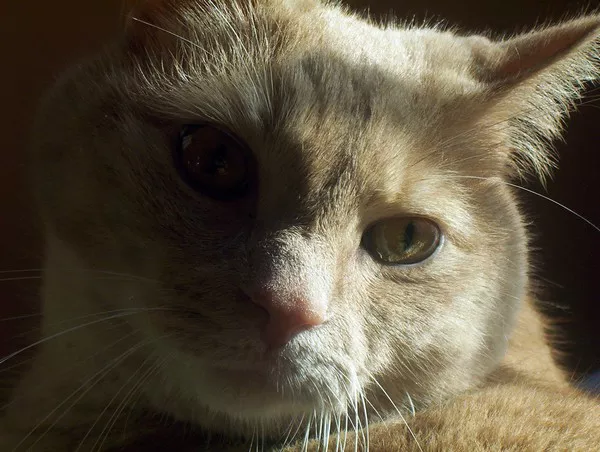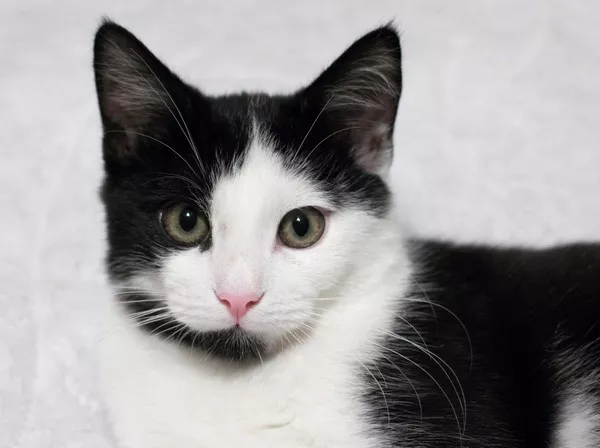The relationship between cats and dogs has long been a topic of curiosity and debate. While popular culture often depicts these two species as natural adversaries, the reality is more nuanced. Many factors influence whether a cat and dog can coexist peacefully, including breed characteristics, individual temperament, and socialization practices. This essay explores the dynamics between Japanese Bobtail cats and dogs, examining their compatibility, behavioral traits, and strategies for fostering a harmonious household.
Understanding the Japanese Bobtail Cat
History and Characteristics
The Japanese Bobtail is a unique breed recognized for its short, pom-pom-like tail, which is a result of a natural genetic mutation. This breed has a rich cultural heritage in Japan, often associated with good fortune and prosperity, particularly represented by the iconic “Maneki-neko” or beckoning cat.
Japanese Bobtails are known for their:
Affectionate Nature: They are typically friendly and sociable, often forming strong bonds with their human companions.
Playfulness: These cats are known for their playful demeanor, enjoying interactive play and engaging with their environment.
Intelligence: Japanese Bobtails are intelligent and curious, making them quick learners and adaptable to new situations.
Social Behavior
Japanese Bobtails are generally social animals that tend to get along well with other pets, including dogs. Their friendly disposition can often facilitate positive interactions with canine companions, but individual personalities and experiences will ultimately dictate the relationship.
Understanding Dog Behavior
Canine Temperament
Dogs are known for their loyalty, playfulness, and protective instincts. However, their behavior can vary significantly based on breed, training, and individual personality. Some key traits to consider include:
Pack Mentality: Dogs are pack animals, and their social structure often influences how they interact with other animals, including cats.
Play Style: Different breeds have varied play styles, which can affect how they interact with a cat. Some dogs may be more prone to chasing or rough play, which can intimidate a cat.
Factors Influencing Dog-Cat Relationships
Breed: Some dog breeds are known to be more cat-friendly than others. Breeds like Golden Retrievers and Beagles are often more sociable and adaptable, while others may have a stronger prey drive.
Socialization: A dog’s early socialization experiences play a crucial role in determining how they interact with cats. Dogs that have been exposed to cats from a young age are generally more tolerant and accepting.
Training: Proper training can help dogs learn to coexist peacefully with cats. Commands such as “leave it” or “stay” can be invaluable in managing interactions.
Compatibility Between Japanese Bobtails and Dogs
General Compatibility
Japanese Bobtails are known for their sociable and friendly nature, which can make them more amenable to living with dogs. However, the success of their relationship largely depends on the individual personalities of both pets.
Positive Interactions
Playful Engagement: Japanese Bobtails enjoy play and can engage in interactive games with dogs, provided the dog is gentle and playful rather than aggressive.
Curiosity: The curious nature of both species can lead to mutual exploration and bonding, especially if introduced correctly.
Potential Challenges
Prey Drive: Some dogs, particularly those with a strong prey drive, may see the cat as something to chase. This can create stress for the cat and lead to dangerous situations.
Territorial Behavior: Both cats and dogs can be territorial. If either pet feels that their space is being invaded, it can lead to conflict.
Individual Differences
Every pet is unique, and their ability to get along will depend on their individual personalities. Some Japanese Bobtails may be more assertive, while others might be shy and prefer to keep their distance. Similarly, individual dogs will have varying levels of energy and temperament, which can influence their interactions.
Introducing a Japanese Bobtail to a Dog
Preparation
Create a Safe Space: Before introducing a cat to a dog, ensure that the cat has a safe space to retreat to, such as a separate room or a high perch where the dog cannot reach.
Gather Supplies: Have necessary supplies ready, including separate food and water bowls, litter boxes, and toys for both pets.
Establish Rules: Set clear rules for both pets regarding boundaries and acceptable behavior.
The Introduction Process
Scent Introduction: Begin by allowing the pets to become familiar with each other’s scent. Swap bedding or use a cloth to rub both pets and then exchange the scents.
Controlled Meetings: Use a leash for the dog during initial introductions. Allow the cat to approach at its own pace while ensuring the dog remains calm and controlled.
Observe Body Language: Pay attention to both pets’ body language. Signs of stress in cats include flattened ears, hissing, or hiding. In dogs, signs of excitement might include barking or lunging.
Gradual Integration: Gradually increase the time they spend together, always supervising their interactions. If either pet shows signs of distress, separate them and try again later.
Positive Reinforcement: Use treats and praise to reward both pets for calm and positive interactions. This can help reinforce good behavior.
Managing a Multi-Pet Household
Creating a Balanced Environment
Separate Spaces: Ensure both pets have their own spaces where they can retreat when feeling overwhelmed. This is especially important for the cat, as they may need a quiet place to feel secure.
Routine and Structure: Establish a routine for feeding, playtime, and exercise to help both pets feel secure and reduce anxiety.
Monitoring Interactions: Continue to supervise interactions, especially during the initial adjustment period. Over time, as both pets become more comfortable, you may be able to allow more freedom.
Addressing Conflicts
Intervention: If conflicts arise, intervene calmly and redirect both pets. Avoid punishing either pet, as this can increase anxiety and worsen the situation.
Behavior Modification: If one pet consistently displays aggressive or fearful behavior, consider consulting a professional trainer or behaviorist for tailored strategies.
Ongoing Training: Continue training for both pets, reinforcing positive behaviors and teaching commands that promote calmness and respect.
The Benefits of Having Both Cats and Dogs
Companionship
Having both a Japanese Bobtail and a dog can provide companionship for both pets. They can engage in play, share experiences, and provide each other with social interaction, which can enhance their overall well-being.
Enrichment
Both species can benefit from the presence of the other. Dogs can encourage cats to be more active and playful, while cats can provide dogs with a sense of companionship and stimulation.
Emotional Support
Cats and dogs can offer unique forms of emotional support to their human companions. The presence of both can create a lively and loving household atmosphere, enriching the lives of everyone involved.
Conclusion
In conclusion, Japanese Bobtail cats and dogs can coexist harmoniously, provided that their individual personalities, socialization, and training are taken into account. While there may be challenges to overcome, the potential for companionship, play, and mutual enrichment makes the effort worthwhile. By following proper introduction techniques and fostering a balanced environment, pet owners can enjoy the benefits of a multi-pet household, bringing together the unique charms of both Japanese Bobtails and dogs. Ultimately, with patience and understanding, these two beloved species can thrive together, creating a loving and dynamic home.
Related topic:

























